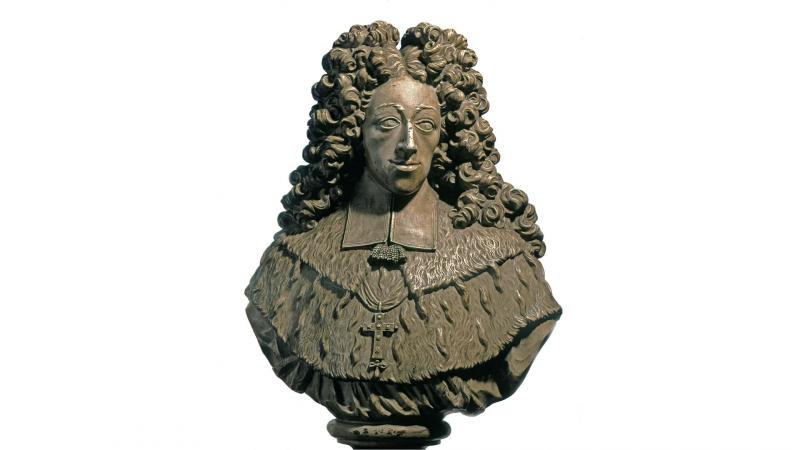Joseph-Clément de Bavière was born in Munich in 1671. While still young, he reigned over the principality of Liège, from 1694 until his death in 1723. He was part of the famous Wittelsbach family, five of whom occupied the Liège Episcopal seat on an almost continuous basis for more than a century and a half: Ernest (1581–1612), Ferdinand (1612–1650), Maximilien-Henri (1650–1688), his uncle, Joseph-Clément (1694–1723) and the last, Jean-Théodore (1744–1763), who was the only one to be made cardinal in 1756. His reign was marked by the war of secession of Spain, which earned him a prolonged period of exile in the court of his ally Louis XIV.
This beautiful patinated plaster bust made by Arnold Hontoire gives us an uncompromising portrait of the sovereign, who shared, at the highest point, a pronounced prognathism with his brother Maximilen-Emmanuel, governor of the Netherlands. Elsewhere, this had captured the attention of the memorialist Saint-Simon, who said of him: “cruelly ugly, very hunchbacked from behind and a little from the front”.
Arnold Hontoire (1650–1709) was the great rival of Jean Del Cour. Like him, he went to Rome and returned to Liège in 1678. He worked on two major projects: the Benedictine abbey of Our Lady of Peace Notre-Dame in Liège, as well as that of Saint-Hubert in Ardennes. Unlike his contemporary, he oversaw an important studio, with collaborators and students, and also benefited from having the confidence of the canons of St. Lambert Cathedral, for which he was the leading sculptor starting from 1698. On his various projects, he often collaborated with the painter Englebert Fisen (1655–1733). Robert Verburg and Cornélis Vander Veken were the main successors that came from his studio.
